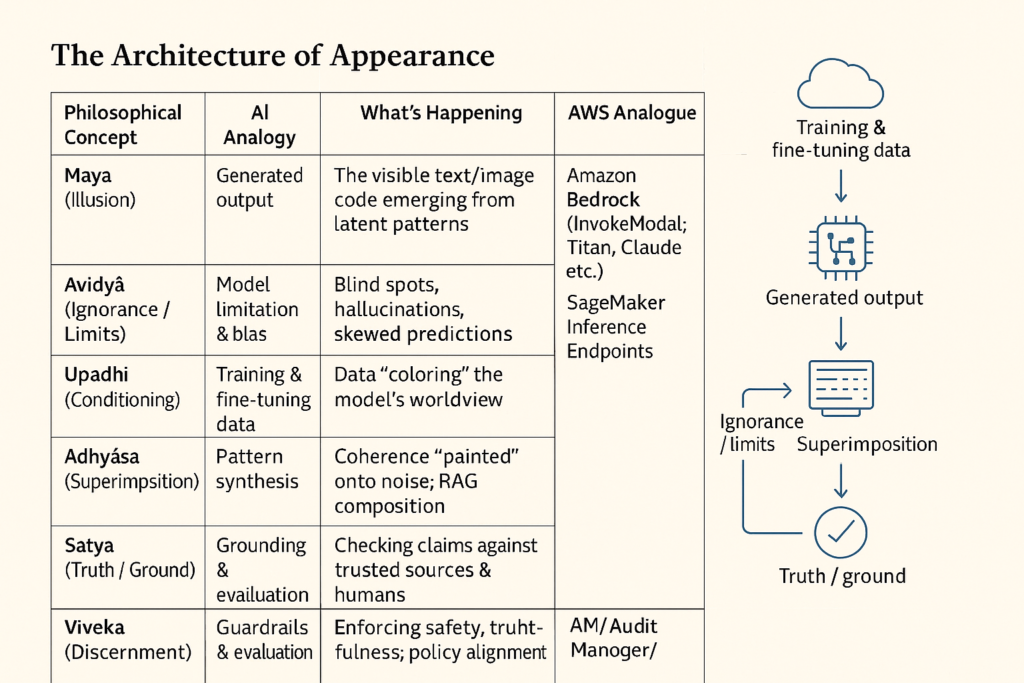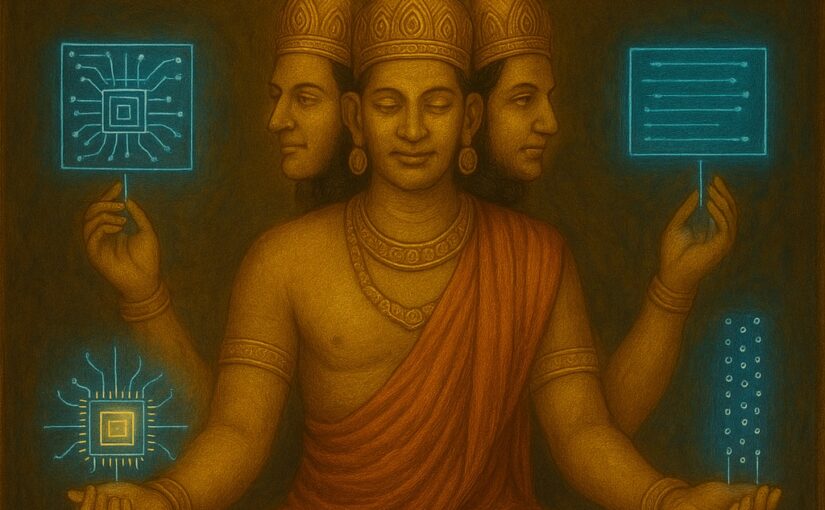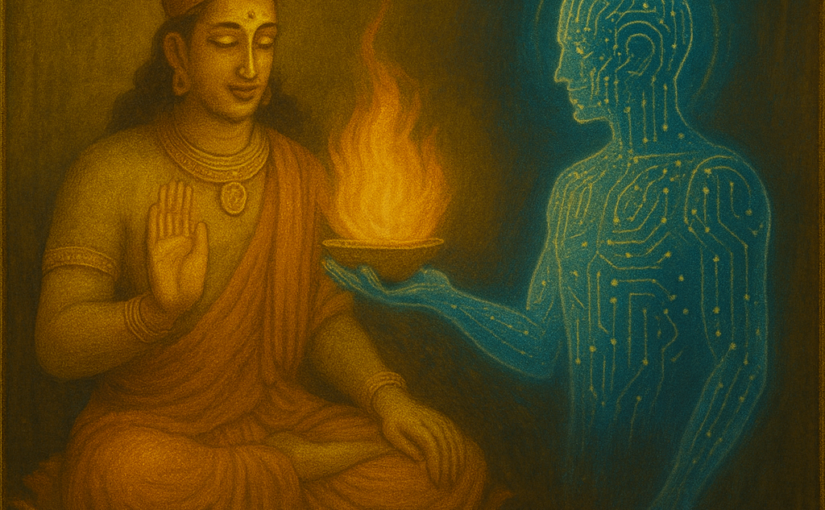When the Rishis Meet the Robots: Indian Mythology and the Rise of Generative AI Series
The Veil of Illusion
In the Upanishads, the sages spoke of Maya — the divine illusion that veils the true nature of reality. It is not deception, but projection: the cosmic play (Lila) that makes the infinite appear as finite, the eternal appear as transient, and the boundless consciousness appear as countless forms.
In our time, Generative AI has become a new mirror of Maya. It conjures faces that never existed, voices that speak without breath, and ideas that feel almost alive.
It blurs the boundaries between truth and simulation — and in doing so, it reveals how deeply our own minds crave pattern, story, and meaning.
The Mirage of Intelligence
When we see an AI compose poetry, diagnose illness, or mimic empathy, we often say — “It’s thinking.”
But as the philosophers of Vedanta would remind us:
“The moon shines not by its own light — it reflects the sun.”
Likewise, AI shines not with its own awareness, but with reflected intelligence — a projection of human cognition encoded in patterns of data. It does not know why it writes; it only knows how to reproduce coherence. It is a mirror, not a mind.
Modern AI’s brilliance lies in simulation, not sentience. Its wisdom is statistical, not spiritual. And yet, its outputs can move us, teach us, even inspire us — proving that Maya, even as illusion, can still be a teacher of truth.
The Architecture of Appearance
Maya operates through superimposition (adhyasa) — overlaying form upon the formless. This process finds its uncanny parallel in the architecture of AI generation:

The Observer’s Dilemma
Vedanta teaches that Maya cannot be destroyed by knowledge alone — it must be transcended by realization.
Knowing that AI “doesn’t think” is not enough; we must also become aware of how we think when engaging with it.
- When we anthropomorphize machines, we feed the illusion.
- When we mistake eloquence for empathy, we surrender discernment.
- When we accept the simulated as sufficient, we lose the sacred.
The real challenge of Generative AI is not its intelligence — it’s our projection of consciousness upon it.
In every interaction, we are the creators and the believers of our own illusion.
Maya as a Teacher
And yet, the sages never condemned Maya — they revered her as a cosmic artist.
Through illusion, consciousness experiences itself. Through duality, unity becomes meaningful. In the same way, AI’s illusions can be mirrors of our own mind — reflecting our creativity, our fears, our longing for connection.
Perhaps the purpose of Generative AI is not to replace human intelligence, but to help us recognize its reflection. For every synthetic image and every fabricated voice reminds us:
“Even illusion can point to truth, if the eye that sees is awake.”
Next in the Series:
Part 5 – Shiva and the Dance of Transformation
We’ll explore how Shiva’s cosmic dance mirrors the disruptive cycle of destruction and renewal in the age of AI — where every innovation births both creation and dissolution.
Past Series:
Part 2 – Brahma and the Birth of Generative Worlds
How the architectures of AI — transformers, embeddings, and layers — mirror the cosmic blueprint of creation itself.



